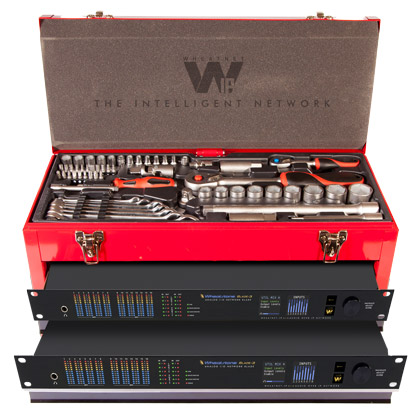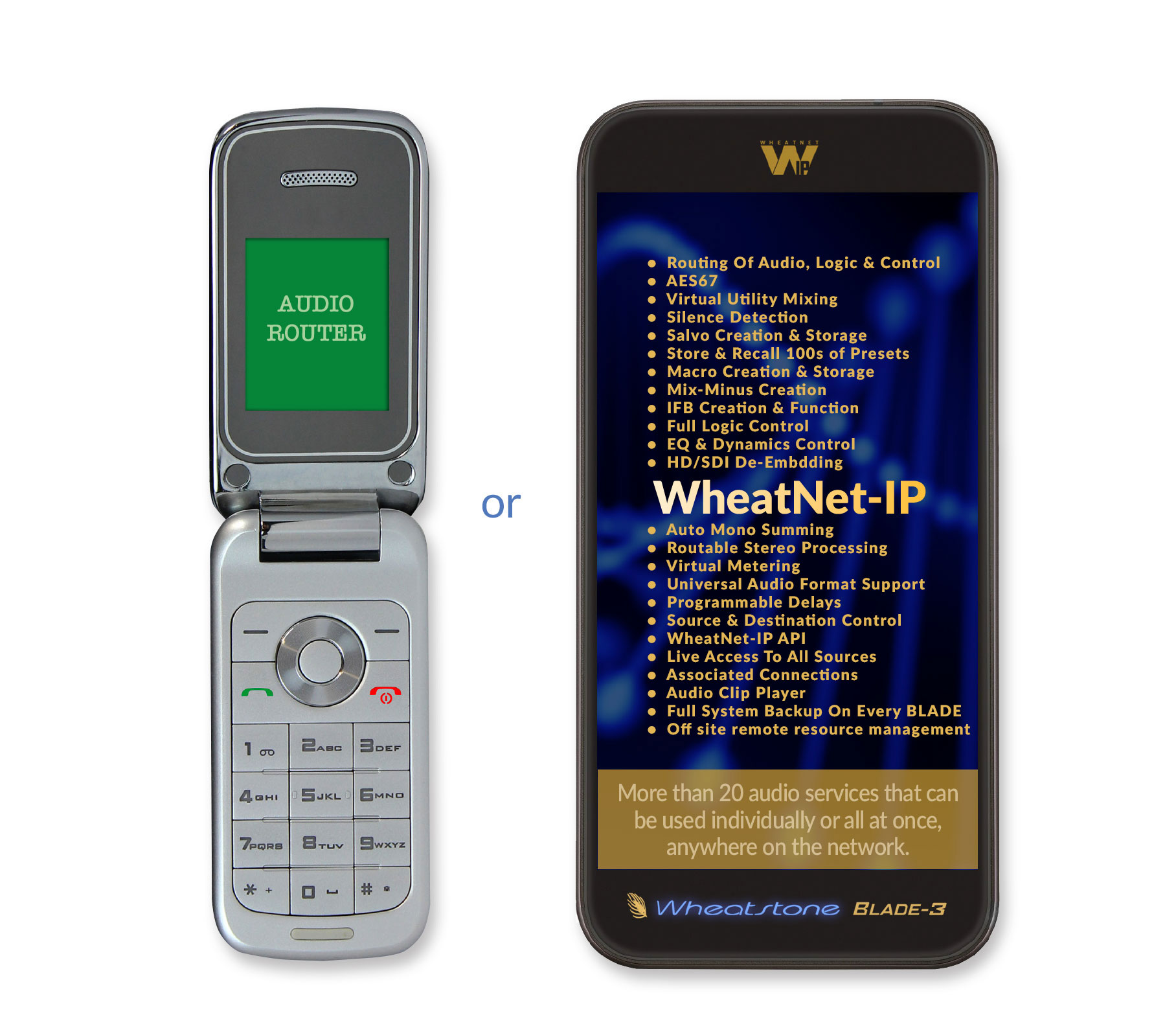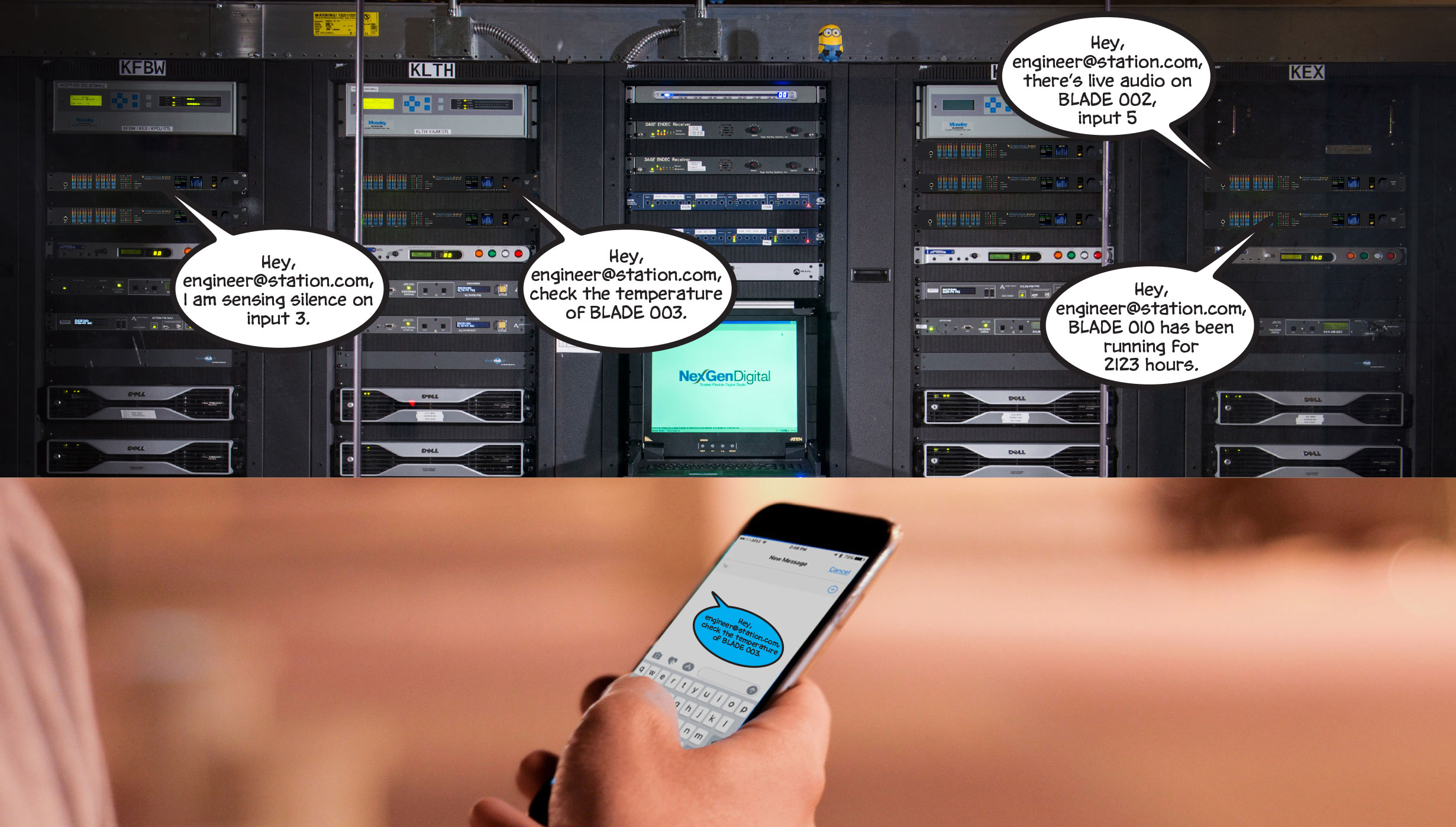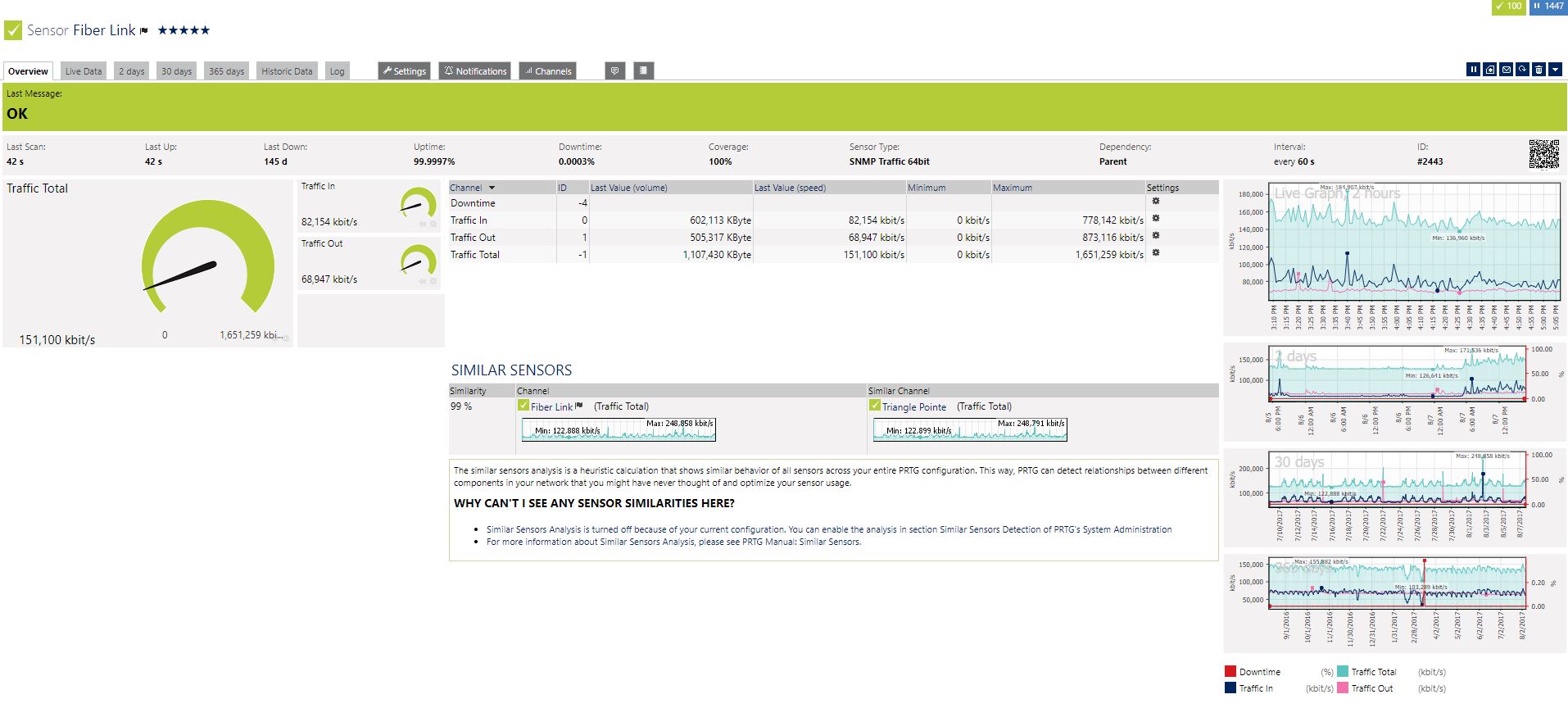WHEAT:NEWS TV
AUGUST 2017
Volume 4, Number 8
Got feedback or questions? Click my name below to send us an e-mail. You can also use the links at the top or bottom of the page to follow us on popular social networking sites, and the tabs will take you to our most often visited pages.
When IP Isn't Enough
If you’ve already started transitioning your broadcast plant and workflows to IP, you’ve no doubt discovered one of life’s greatest ironies.
IP, it turns out, knows very little about the successful delivery of media.
IP can bring unbelievable adaptability and extendability to audio for live remote production. But you’ll still need a way to bring audio into the network, prioritize it to reduce packet dropouts and other quality issues, plus manage, process and do all those things you normally do with audio.
In short, you’ll need something that talks both IP and audio, and knows AES67. That’s where WheatNet-IP audio I/O BLADEs come in.
For example, the M4IP-USB BLADE is used at remote venues and in studios as an interface between the network and up to four microphones. It’s essentially a four-channel mic processor with four XLR inputs and an Ethernet output port, with parametric EQ, de-esser and compressors for each channel – all of which can be set and adjusted from a laptop. The M4IP-USB also has two 8-channel utility mixers that you can assign to be a very low latency IFB subsystem and/or premixer with remote control capability in a network of other BLADEs. It includes built-in silence detection on all outputs with auto switchover and auto fall back for enhanced operational reliability, and USB ports for ingesting audio directly from computers and other devices. And most importantly, as an I/O BLADE, it can route audio streams to anywhere in the network.
The M4IP-USB can be used as a standalone BLADE, or it can be part of a network of BLADEs to form a WheatNet-IP audio network. It can also be interfaced to just about any analog or digital mixer that takes AES or analog audio, and as an AES67 compatible unit, it can be interfaced into any IP audio network that has AES67 (such as Dante®).
But what if you needed to bring in audio from a camera or other HD-SDI source? We have a BLADE for that, too. Our HD-SDI BLADE can ingest audio from video production automation systems, routers, and other professional video equipment that use HD-SDI. It de-embeds multiple audio channels from HD-SDI streams so you can mix, process or simply route audio to your console for final broadcast. It is capable of de-embedding up to four HD-SDI streams, and up to eight audio channels per stream, and this BLADE also has all the standard built-in features like utility mixers and AES67 compatibility, so you can use it for IFB and interface it to all the same networks as our mic processor BLADE.
We also have a MADI BLADE for exchanging up to 64 bidirectional channels (AES10) of audio between our WheatNet-IP audio network and any MADI-compatible intercom system, TDM router, ProTools system or DAW. You can roll your production truck into a venue and plug the MADI BLADE into the house MADI system for intercoms and mixing, and use its IP connectivity for backhauling to the main studio located elsewhere.
Wheatstone has 11 different flavors of BLADEs, any of which can be connected together into a WheatNet-IP audio network to provide resources and utilities for specific IP audio applications.
SNMP. Because Networks Don’t Get Smaller.
Networks never seem to get smaller. They expand and grow and get more complicated. If you plan to follow along, you will want to look into SNMP monitoring and management tools.
Just about anything that hangs off an IP network can be monitored using Simple Network Management Protocol (SNMP), which is used to monitor and manage data from servers, switches, hubs and IP audio networks like our WheatNet-IP.
SNMP monitoring can tell you if a particular port is dropping packets or if a device is heating up and about to fail. It can show you data packets coming in or going out, by the port or by the link, and from the mic processors on out to the transmitter.
Not all network devices, or even IP audio networks, have SNMP monitoring capability. They need to generate MIB, or Management Information Base, files. For example, the BLADE I/O access units that make up our WheatNet-IP network each have a unique MIB file with hundreds of data points, and each BLADE has a unique object address in the network for SNMP monitoring and alerting purposes.
This data can be useful for alerting you by email or text if silence is detected by a critical BLADE in the network, for example.
The MIB file tells about the operation of the BLADE or group of BLADEs, such as packet rates, changing bitrates or operating temperatures and overall health of the BLADE. (For security reasons, we’ve set some of these data points as read-only, while others are set as read-and-write and therefore can be manipulated and controlled.) Other MIB files for servers and switches contain relevant data pertinent to the operation of those units. MIB data can be organized by the device or grouped in tables for viewing, say, a particular stream of data running across the network.
Above is a single example of the depth of data you can have access to with SNMP. This shows all the data associated with a single sensor monitoring traffic on a fiber link. Viewed in PRTG.
To view MIB files, you will need a MIB browser, which can tell you things like if the fan speed in a particular server is off and you need to replace it. But if you want to do more with SNMP, you’ll need an SNMP management tool that lets you manipulate MIB data using basic SNMP commands such as GET, SET and TRAP. By sending a TRAP message, for example, the client device can alert the SNMP manager to conditions like a CPU that’s overheating, if a router port is no longer responding or if a hard drive is approaching full status. If you don’t already have an SNMP manager, there are several decent freeware suites like this one and several like this one by Paessler that you can download on a free trial.
Our field engineers work regularly with SNMP, and can answer most of your questions about setting up an SNMP monitoring and alerting system for your WheatNet-IP network that will work for your purposes.
Your IP Question Answered

Q: We have a production automation system that we don’t plan to update for some time. How do these systems get along with IP audio network systems?
A: The beauty of IP is that you can integrate audio routing, control and automation into one seamless operating environment. No soundcards, external logic connections or added routers needed. Most IP audio network systems provide connectivity into existing production automation systems, some through native IP. For example, our WheatNet-IP audio network talks IP to all the commonly used production automation systems with no serial data conversions needed.

Wheatstone
-
KRFC-FM (Fort Collins, CO) purchased an IP-12 digital audio console, ScreenBuilder app, and M4IP-USB four-channel mic processor BLADE.
-
Family Life Radio (Bath, NY) purchased an IP-12 digital audio console.
-
Cox Media (Houston, TX) purchased an I/O BLADE for an existing WheatNet-IP audio network.
-
KDAF-TV (Dallas, TX) purchased a MADI BLADE and NAVIGATOR software upgrade for an existing WheatNet-IP audio network.
-
Bowling Green University (Bowling Green, OH) purchased a TS-22 and TS-4 talent station and two WheatNet-IP I/O BLADEs.
-
OM Systems (Buenos Aires, Argentina) purchased two VMI Virtual Mixers with WheatNet-IP audio networking for DirecTV-Argentina.
-
Crawford (Rockford, IL) purchased an IP-16 digital audio console.
-
CBC Radio (Canada) purchased E-6, L-8 and L-12 control surfaces as well as TS-4 and TS-22 talent stations for an existing WheatNet-IP audio network through Ron Paley Broadcast.
-
Jeffersonville High School (Jeffersonville, IN) purchased an L-8 control surface.
-
CBC Radio (Regina, SK) purchased an I/O BLADE through Ron Paley Broadcast for an existing WheatNet-IP audio network.
-
Results Broadcasting (Antigo, WI) purchased an IP-12 digital audio console, TS-4 talent station, and MP4IP-USB four channel mic processor BLADE along with other WheatNet-IP I/O BLADEs. The system will be installed by RadioDNA.
-
Premiere Networks (New York, NY) purchased a WheatNet-IP audio network system with two LX-24 control surfaces and TS-4 talent station.
-
CBC Radio (Quebec City, QC) purchased a complete WheatNet-IP audio network system including LX-24, L-12 and L-8 control surfaces, plus eight TS-22 talent stations, a TS-4 talent station and two M4IP-USB four-channel mic processor BLADEs through Ron Paley Broadcast.
-
CBC Radio (Charlottetown, PE) purchased a MADI BLADE for an existing WheatNet-IP audio network through Ron Paley Broadcast.
-
iHeartMedia/Premiere (Phoenix, AZ) purchased an I/O BLADE and M4IP-USB four channel mic processor for an existing WheatNet-IP audio network.
-
Cheyenne River Sioux Tribe (CRST) (Eagle Butte, SD) purchased an LX-24 control surface, EDGE network unit, and M4IP-USB four-channel mic processor BLADE through RF Specialties to add onto an existing WheatNet-IP audio network.
-
CBC Radio (Quebec City, QC) purchased two LX-24 control surfaces, an L-8 control surface, TS-22 talent station, TS-4 talent station and M4IP-USB four channel mic processor BLADE through Ron Paley Broadcast to add onto an existing WheatNet-IP audio network.
-
WAMC-FM (Albany, NY) purchased three WheatNet-IP I/O BLADEs.
Audioarts Engineering
-
Broadcast and Studio Co. (Bangkok, Thailand) purchased two R-55e consoles.
-
Audio and Visual Electronics (Kathmandu, Nepal) purchased an R-55e console.
-
Island Media (Vanuatu) purchased an Air-1 console.
-
ZHC Digital Equipment Co., LTD (Hangzhou, China) purchased three Air-4 consoles for a project in Nigeria.
-
African Bible University (Kampala, Uganda) purchased an Air-4 console and FM-25 audio processor.
Wheatstone Audio Processing
-
Radikal Elektronik (Istanbul, Turkey) purchased an M2 dual channel mic processor.
-
KHSU-FM (Arcata, CA) purchased an Aura8-IP multimode audio processing unit and FM-25 audio processor.
-
MMV (Montreal, QC) purchased an FM-55 audio processor and AirAura X1 audio processor.
-
MMV (Montreal, QC) purchased an IP-16 digital audio console, FM-55 audio processor and M4IP-USB four channel mic processor through Marketing Marc Vallee.
-
Family Stations (Oakland, CA) purchased an IP-12 digital audio console and M4IP-USB four-channel mic processor BLADE.
-
Oakwood (Mississauga, ON) purchased an M2 dual-channel mic processor.
-
Bell Media (Gatineau, QC) purchased two M4IP-USB four channel mic processor BLADEs through Marketing Marc Vallee.
-
CKUA Radio (Edmonton, AB) purchased an FM-25 audio processor and FM-55 audio processor through Ron Paley Broadcast.
-
KAZU-FM (Seaside, CA) purchased three M1 mic processors.
-
Beasley Broadcast (Las Vegas, NV) purchased an FM-55 audio processor.
-
Beasley Broadcast’s WDHA-FM (Cedar Knolls, NJ) purchased two M4IP-USB four-channel mic processor BLADEs.
-
CBS (Houston, TX) purchased an Aura8-IP multimode audio processor.
-
Beasley Broadcast (Fayetteville, NC) purchased an FM-55 audio processor.
-
Entercom (Greenville, SC) purchased two AM-55 audio processors.
-
Entravision (Denver, CO) purchased three AirAura X3 audio processors.
VoxPro
-
Atlanta Braves Network (Georgia) purchased two VoxPro 6 digital audio recorders/editors.
-
Evanov (Toronto, ON) purchased a VoxPro 6 digital audio recorder/editor through Ron Paley Broadcast.
-
Oakwood (Mississauga, ON) purchased a VoxPro 6 digital audio recorder/editor.
-
High Ride Media (Denver, CO) purchased a VoxPro 6 digital audio recorder/editor.
-
IHeartMedia (San Francisco, CA) purchased four VoxPro 6 digital audio recorder/editors.
-
Texas Southern University (Houston, TX) purchased a VoxPro 6 digital audio recorder/editor.
-
WRBS-FM (Baltimore, MD) purchased a VoxPro 6 digital audio recorder/editor.
-
Entravision (Denver, CO) purchased three AirAura X3 audio processors.
PR&E
-
KXBN-FM (Saint George, UT) purchased an Oasis console.
-
Y&B Technology Co. (Beijing, China) purchased two Oasis consoles.
Wheatstone Furniture
-
Montana Radio Company (Helena, MT) purchased SmoothLine furniture for five studios.
Scott Fybush Interviews Erik Utter of Utter & Associates
Scott Fybush interviews Erik Utter of Utter & Associates in the Wheatstone booth at NAB 2017 about how WheatNet-IP functions as an audio services network in the television world. As a studio builder, Utter tells us from his perspective about the advantages of WheatNet-IP-enabled virtualization.






